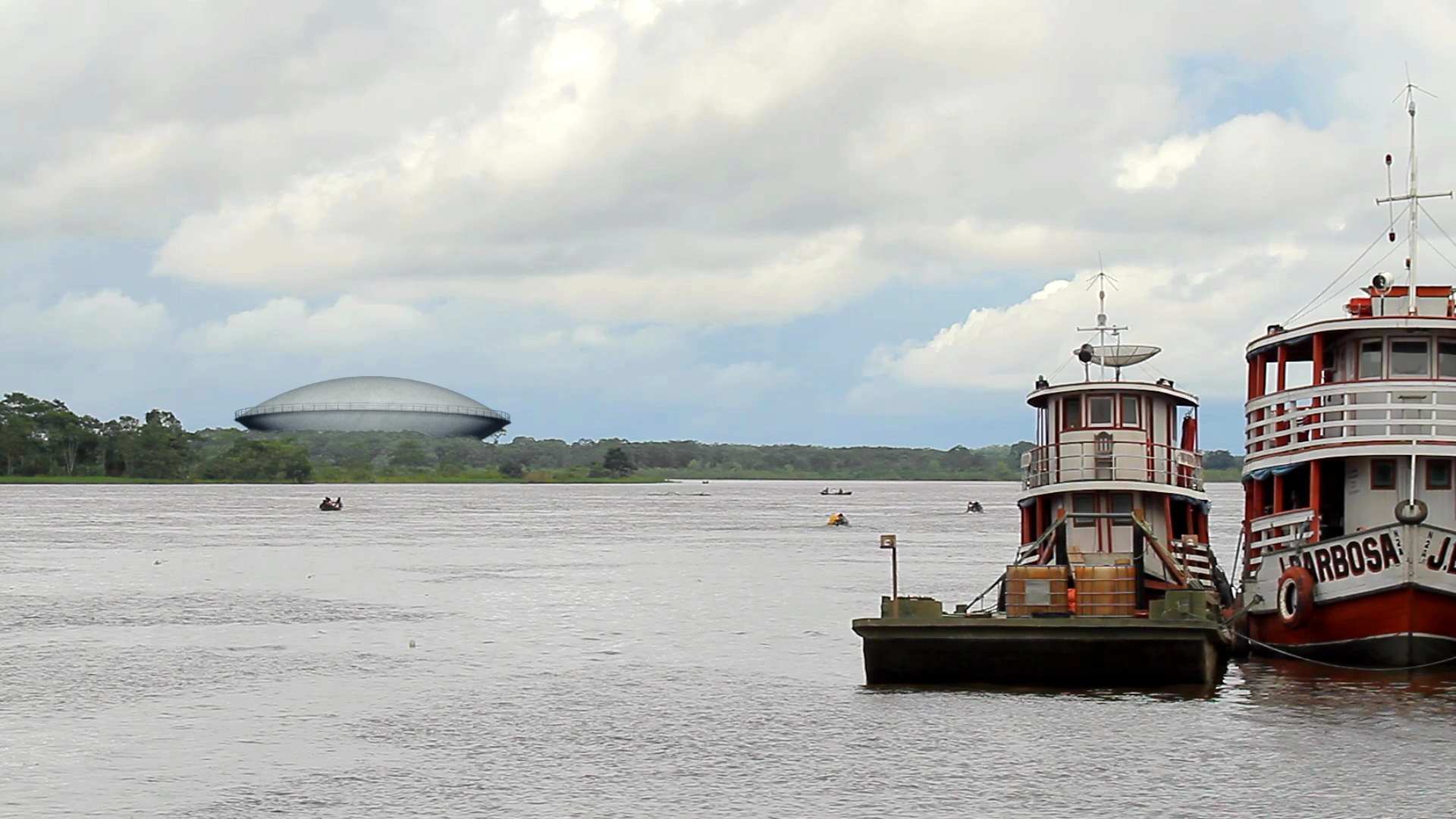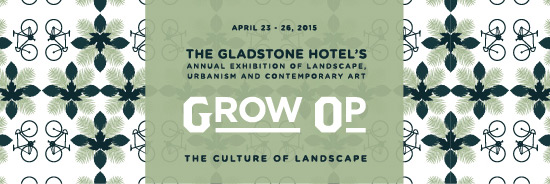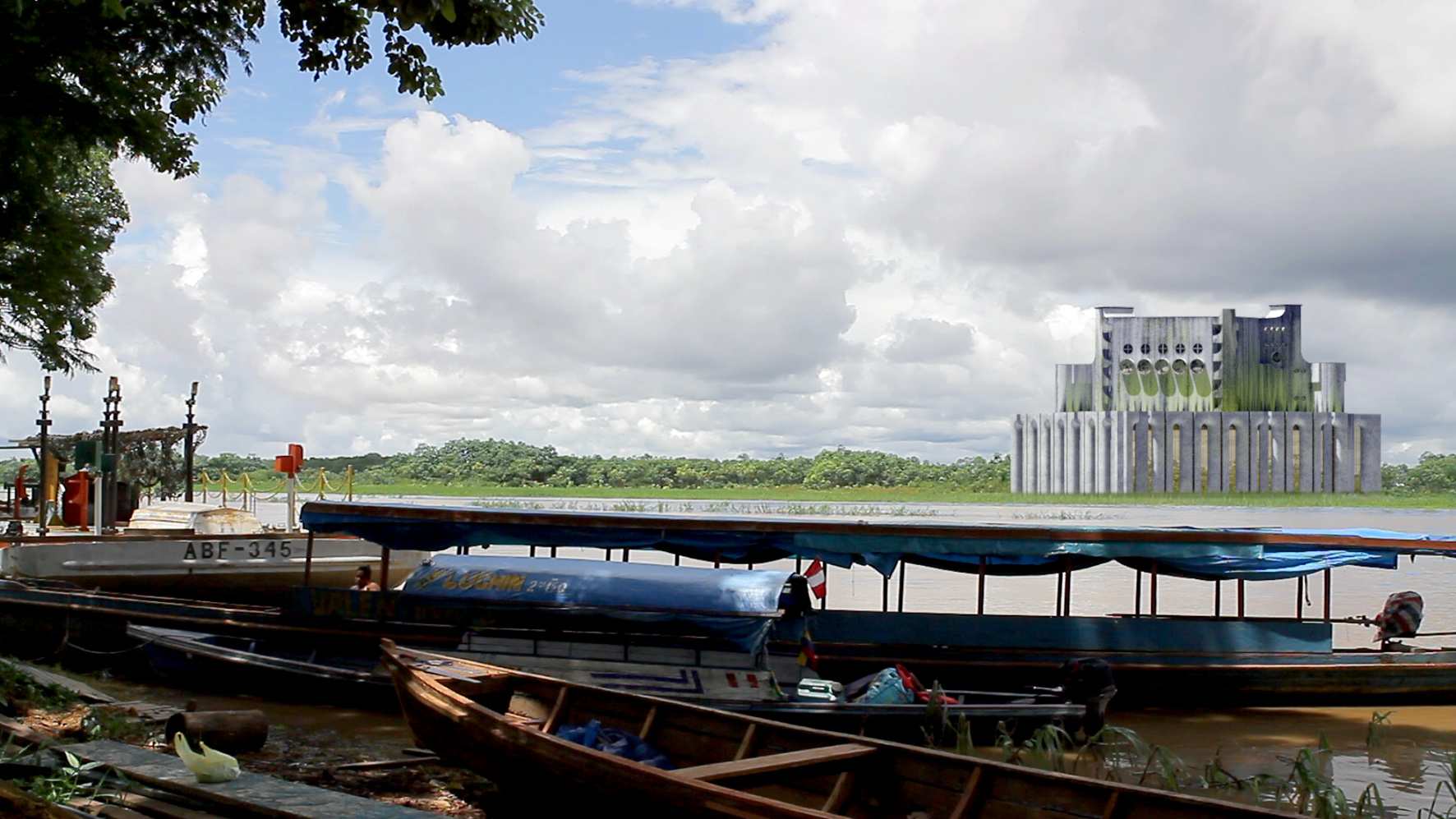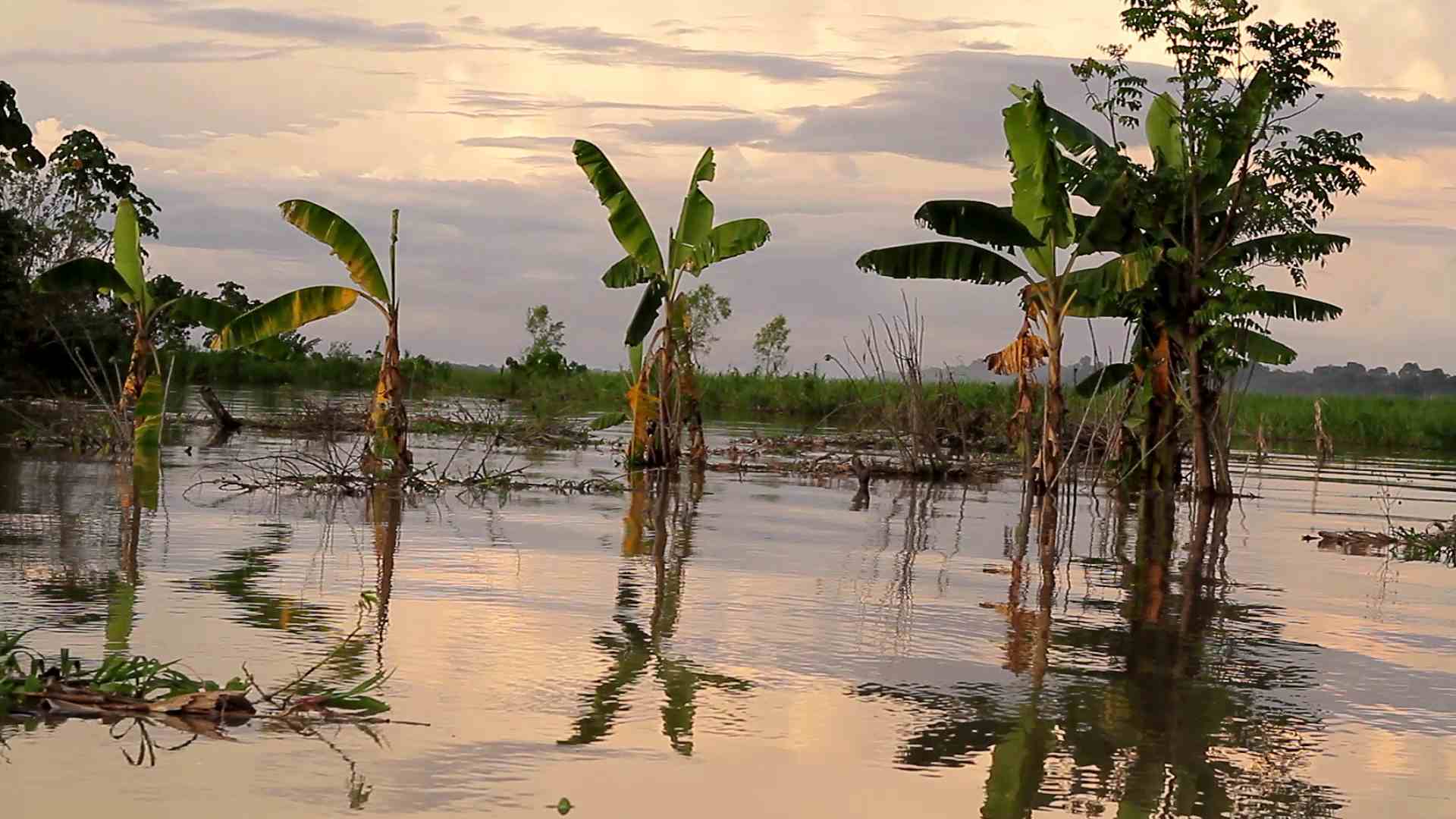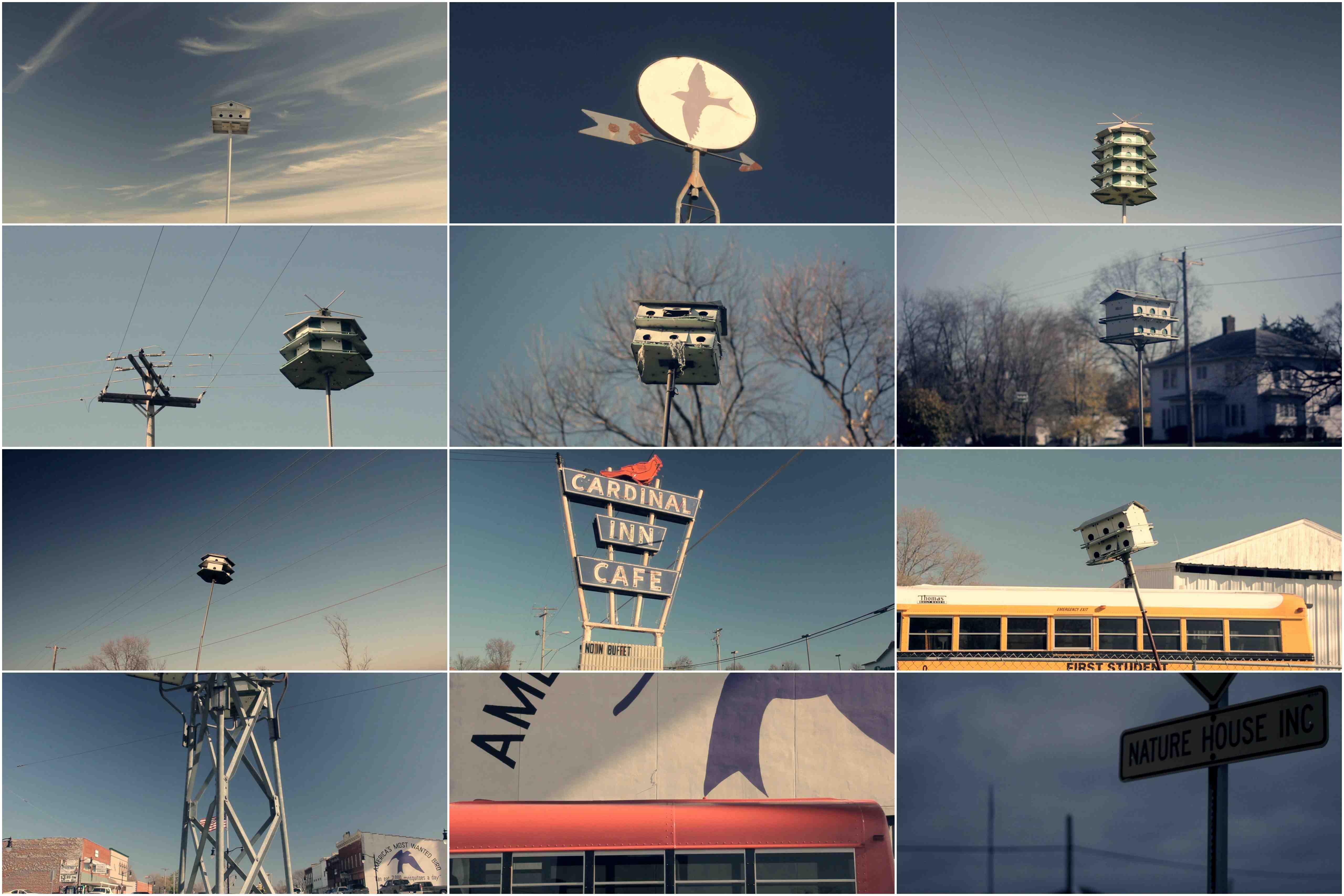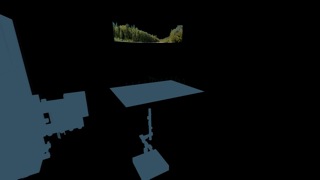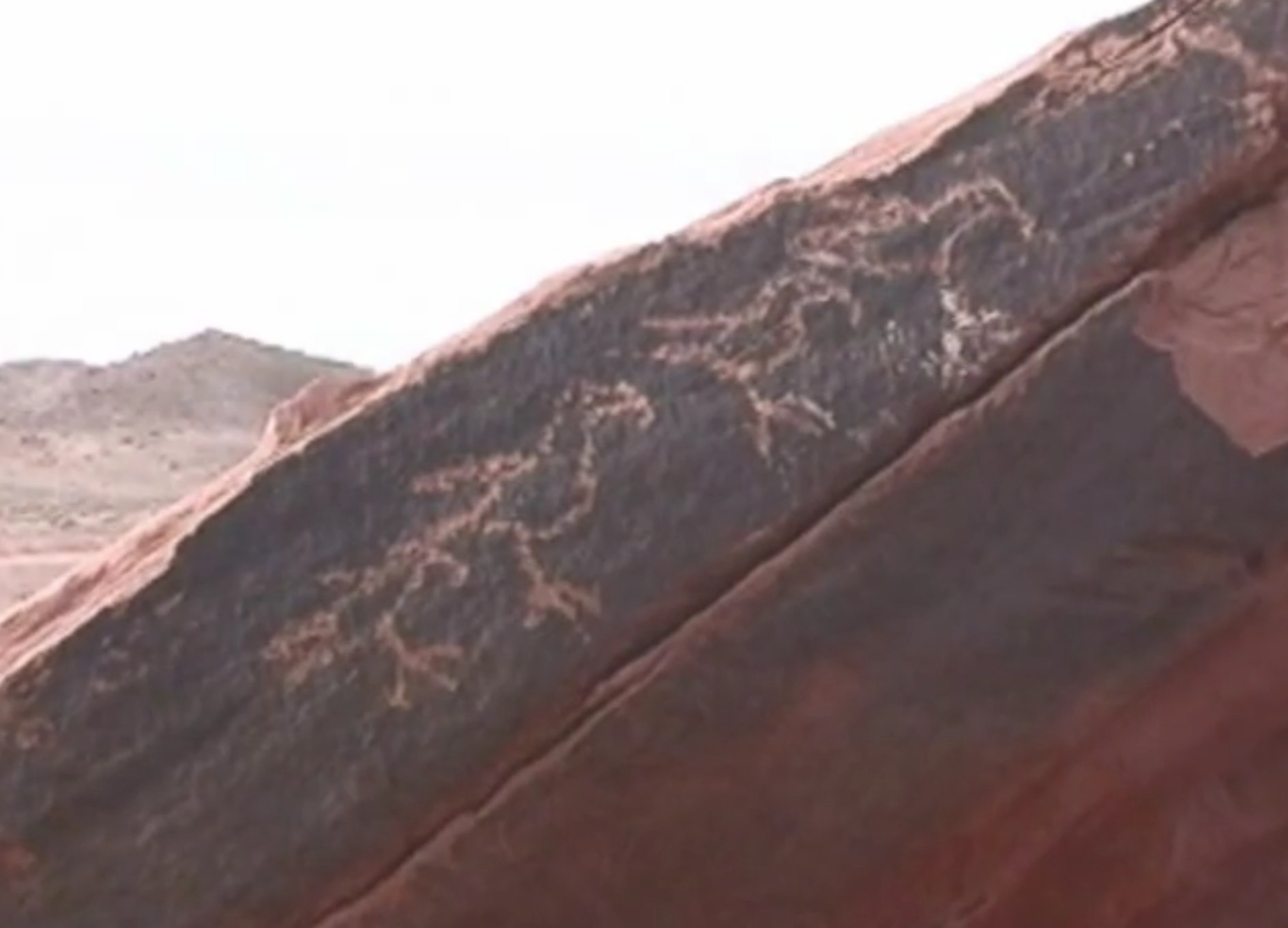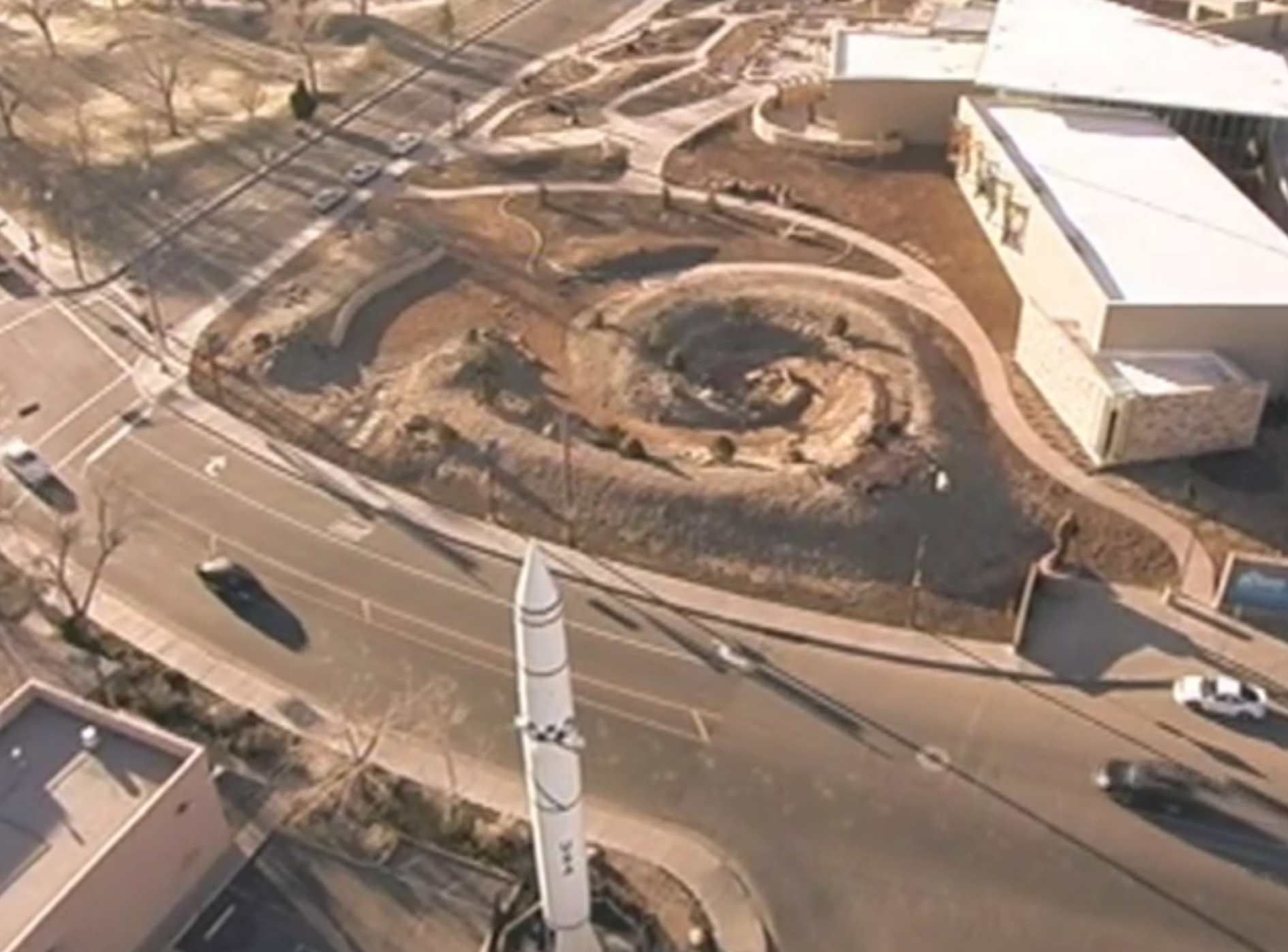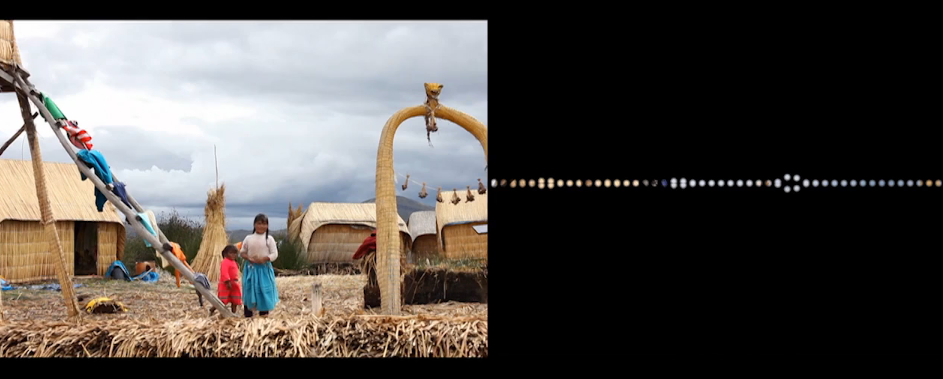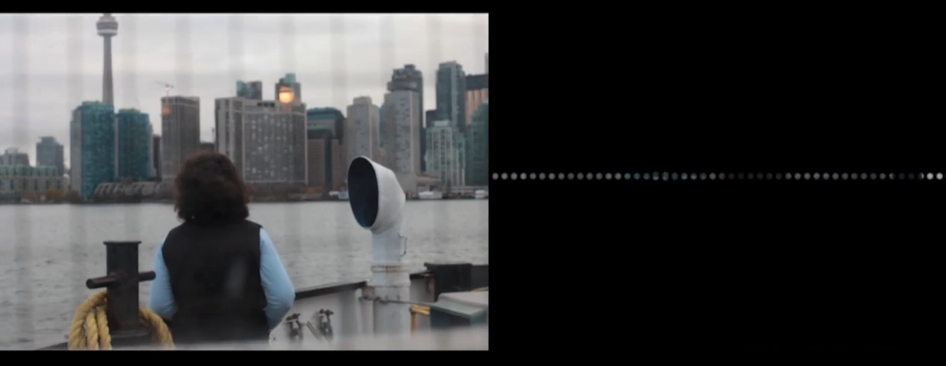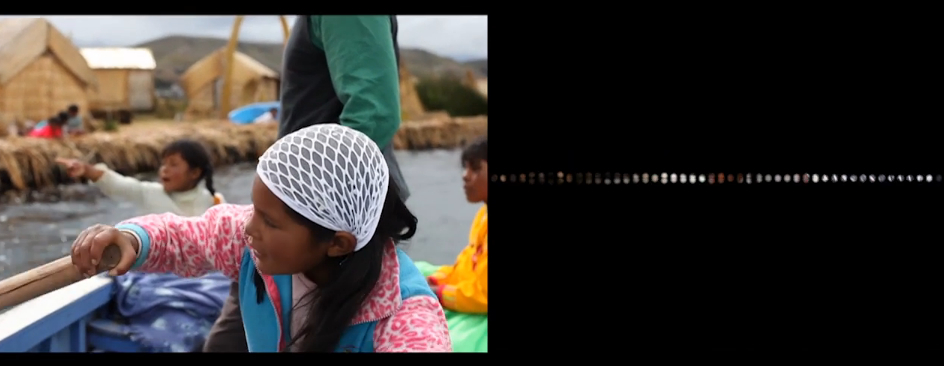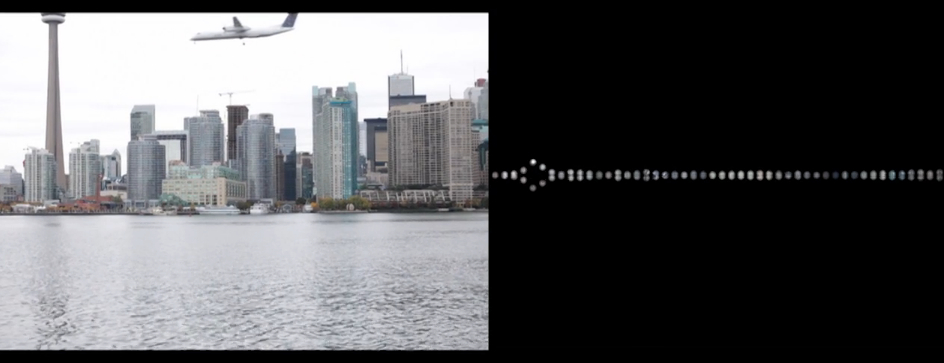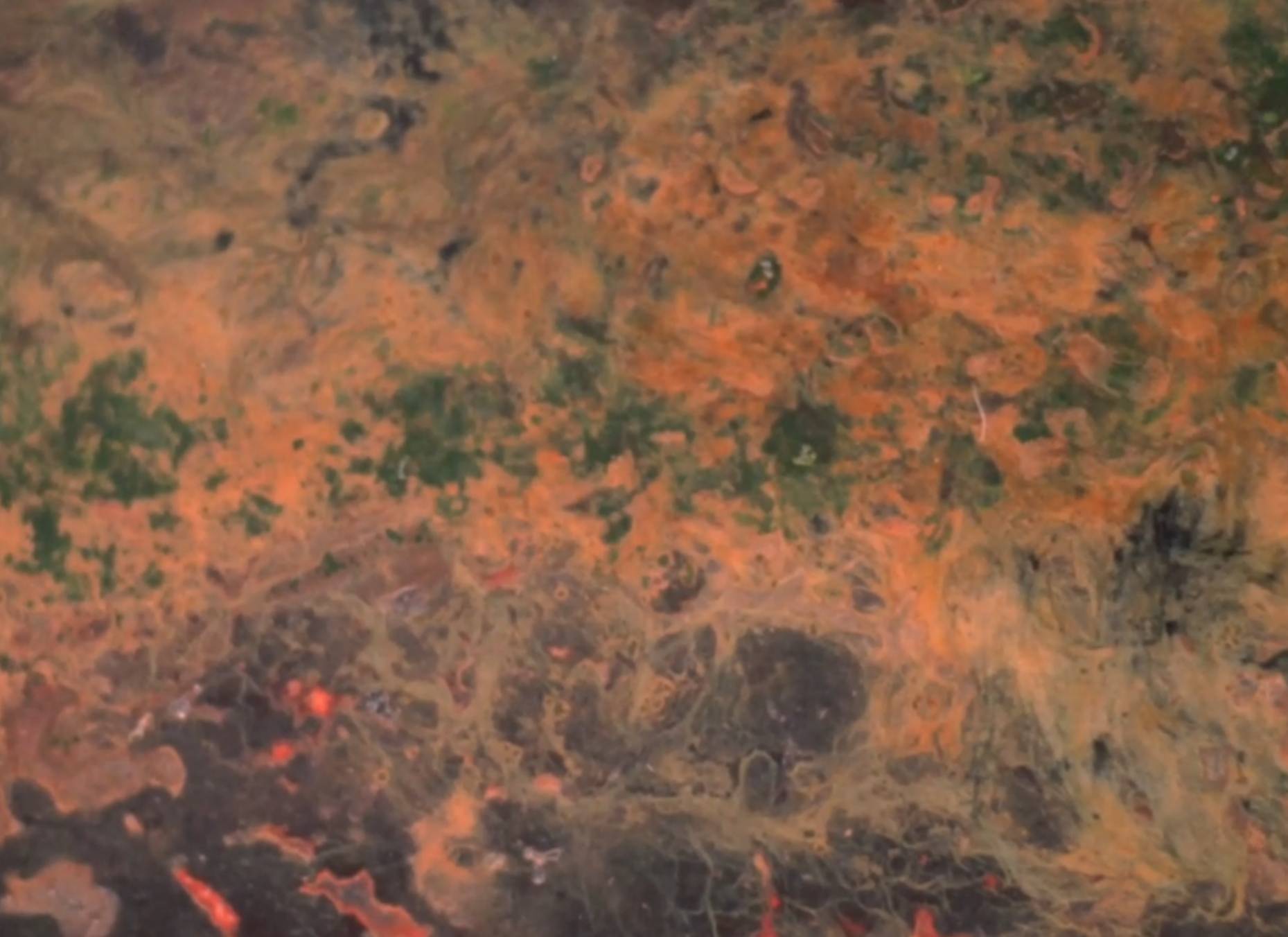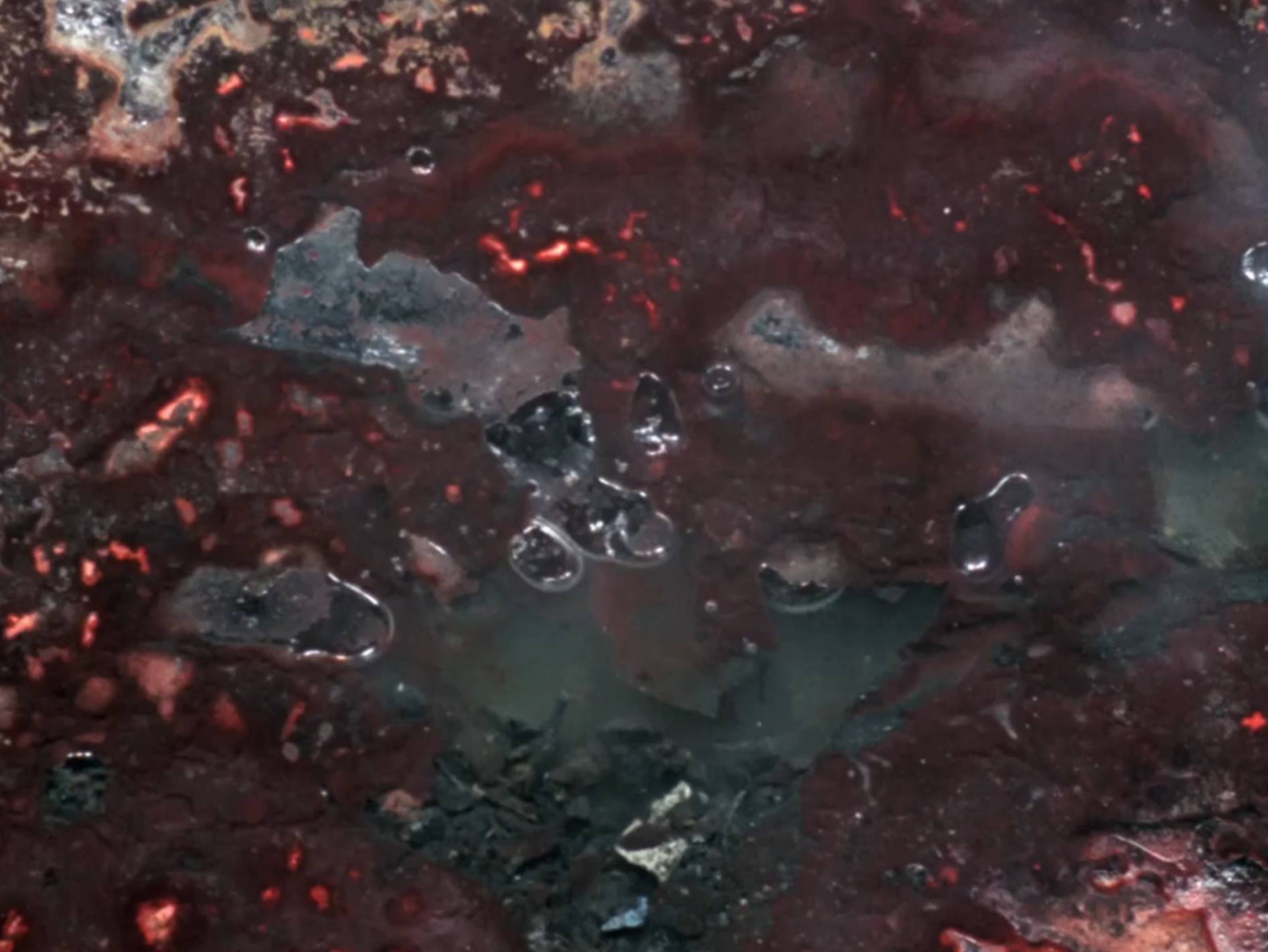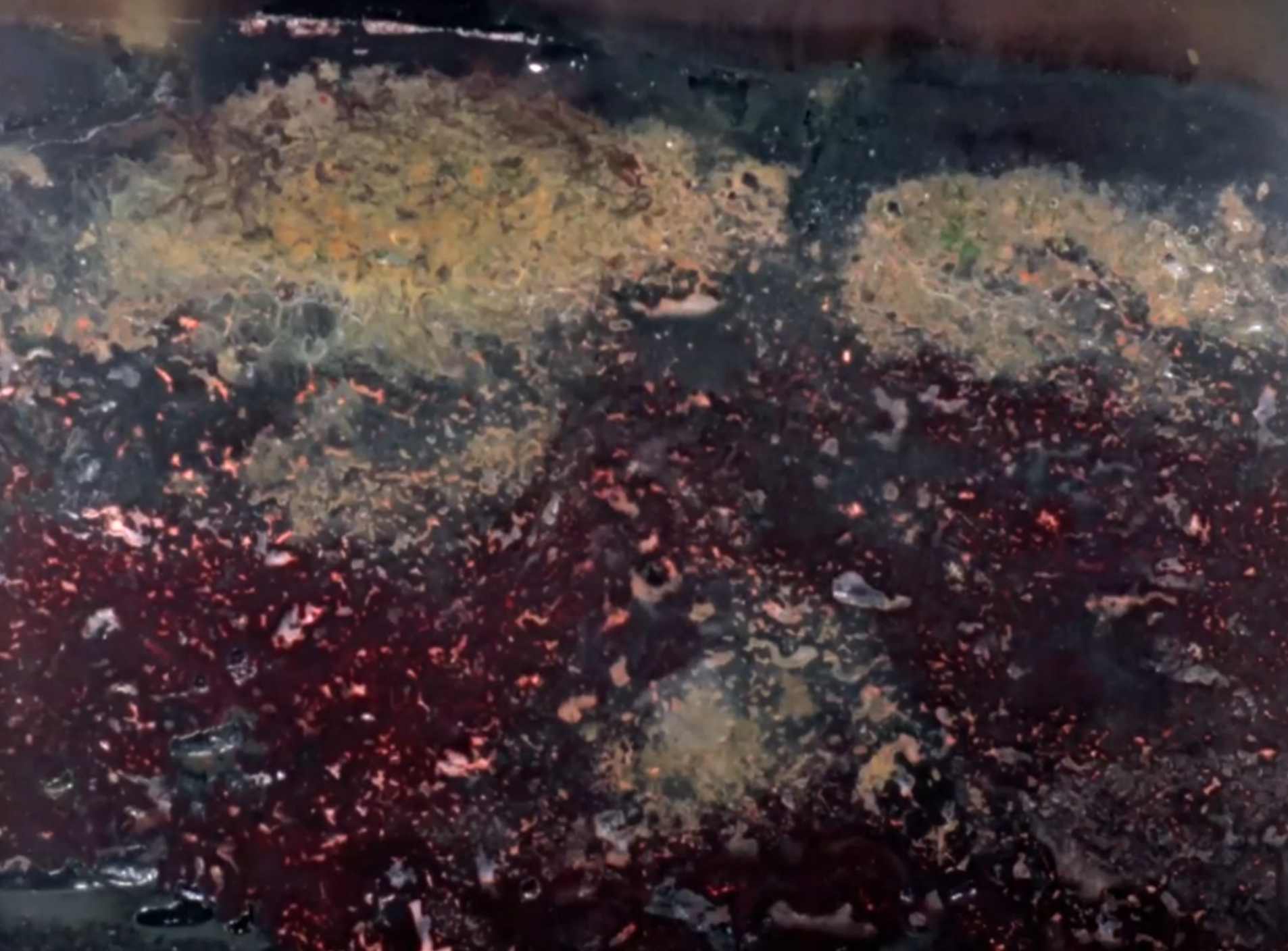Gladstone Hotel Ballroom, 1214 Queen Street West
Wednesday, April 22, 7:30 PM $8/ $5 Members + Students
Co-presentation with Grow-Op 2015, April 23 – 26
Part of Winter 2015
Co-presented with Grow Op 2015; The Culture of Landscape Future Ruins is a program of short films and videos examining the theme “cultures of landscape” from disparate perspectives, with real and imagined architectures, traumatic collisions of past and future, all the while pondering our moment of crisis in the newly minted era of the Anthropocene. Spanning the gorgeously crumbling domesticated landscapes of post-colonial Mesoamerican shorelines in Laura Huertas’ Aequador, the obtrusive Brutalist monoliths of Condoronto’s Harbourfront in Francesca Dasso’s Conversations: Lago Titicaca – Lake Ontario, the sites of economic collapse and toxic pollution on the Eastern Seaboard in Sarah J. Christman’s hauntingly beautiful Gowanus Canal, the vibrant transitory birdhouses of the Purple Martin across the United States in Nick Jordan’s Nature House Inc., a controversial public art project in Albuquerque, New Mexico in Nora Naranjo-Morse’s Numbe Whageh, all the way to the baroque simulated gardens of videogame space in Harun Farocki’s Parallel III. Future Ruins assembles a variety of works probing the ways human beings shape spaces and places, both real and virtual, and what these sites tell us about ourselves.
Programme:
Gowanus Canal, Sarah J. Christman (7 min, 2013 USA)
Conversations: Lago Titicaca – Lake Ontario, Francesca Dasso (5 min, 2013 Canada)
Parallel III, Harun Farocki (7:21 min, 2014, Germany)
Nature House Inc., Nick Jordan (7 min, 2013, UK)
Aequador, Laura Huertas Millán (19:47 min, 2012 France)
Numbe Whageh, Nora Naranjo-Morse (9:47 min, 2005 USA)
Grow Op 2015; The Culture of Landscape
List of Program & Events
Gladstone Hotel’s 3rd annual Grow Op exhibition greets spring with open arms from April 23rd to 26th, 2015. Curated by Victoria Taylor and Graham Teeple with Britt Welter-Nolan, this four-day exhibition celebrates innovative ideas and conceptual responses to landscape, gardens, art, and place-making under this year’s theme, the culture of landscape.
Grow Op 2015 facilitates a multi-disciplinary forum across a broad range of creative practices. One of the most intriguing annual exhibitions in Toronto, Grow Op encourages an array of perspectives and dialogues surrounding landscape and place. It challenges our understanding of nature and the built environment around us.
How can landscape architecture be a driving force in the creation of sustainable cities? How can design not only enhance the lived experiences of citizens and communities, but also improve urban infrastructure and functionality? What does a contemporary culture of landscape in relation to our cities look like? What does it sound like? Feel like? These questions are imbued in the multitude of jury selected artworks, accompanying talks, tours, parties and even a fair of local organizations focused on urban agriculture at Grow Op Gets Dirtier.
BIOS:
Sarah J. Christman makes non-fiction films that explore the intersections between people, technology and the natural world. She received the New Visions Award from the San Francisco International Film Festival for her film “Dear Bill Gates”, and Jury Awards from the Ann Arbor Film Festival for “Broad Channel” and “As Above, So Below.” Christman’s work has screened widely, including MoMA Documentary Fortnight, Rotterdam International Film Festival, Toronto International Film Festival, New York Film Festival, and Los Angeles Filmforum. She is an Assistant Professor in the Film Department at Brooklyn College.
Francesca Dasso is an interdisciplinary artist from Lima, Peru. She studied at Brown University, the University of British Columbia and is currently completing her MFA at Ryerson University. Her projects explore the relationship between material culture, spiritual practice and geographic place. Her works have taken the form of experimental films, new media installations and net art.
Harun Farocki (1944-2014) was born in German-annexed Czechoslovakia. From 1966 to 1968 he attended the Deutsche Film- und Fernsehakademie Berlin (DFFB). In addition to teaching posts in Berlin, Düsseldorf, Hamburg, Manila, Munich and Stuttgart, he was a visiting professor at the University of California, Berkeley. Farocki made close to 120 films, including feature films, essay films and documentaries. He worked in collaboration with other filmmakers as a scriptwriter, actor and producer. In 1976 he staged Heiner Müller’s plays The Battle and Tractor together with Hanns Zischler in Basel, Switzerland.
He wrote for numerous publications, and from 1974 to 1984 he was editor and author of the magazine Filmkritik (München). His work has shown in many national and international exhibitions and installations in galleries and museums.
Nick Jordan‘s practice is cross-disciplinary, encompassing video, painting, drawing, publications, sculpture and public art. Jordan’s work explores the relationship between the natural world and our multifaceted cultural histories. Deploying a documentary approach, Jordan’s films seek out particular locations and unexpected moments. Distilled and honed through editing and soundtrack compositions, the work presents short cinematic scenarios or documentary essays, drawing out distinctive motifs in landscapes that are shaped and characterised by human interventions.
Nature House Inc., was shot in an Illinois town boasting the highest number of bird houses for Purple Martins – ‘America’s Most Wanted Bird’. The film captures the monolithic architecture of a 27 storey tower of bird houses, in the centre of town, reflecting a desire to live in close proximity to nature, in an urban location. Nature House Inc. lead to the artist importing Purple Martin bird houses from the USA, and painting them individually. The resulting sculptural work, Nature Houses, was installed in Swansea, as part of Art Across the City, 2014.
Nick Jordan’s drawings and paintings reconstitute various motifs that emerge from the process of film-making. Hovering between abstraction and signage, Jordan’s oil & beeswax paintings assimilate and reconfigure particular structural and graphic forms, which are often presented in sequences or series. Jordan’s recent exhibitions include Centre d’art Contemporain, Roubaix, France; Furtherfield Gallery, London; S1 Artspace, Sheffield; Art Across the City, Swansea; Musée du Quai Branly, Paris; Kunsthaus Graz, Austria; Kunstmuseum, Bonn; Cornerhouse, Manchester; Kunstsalon, Berlin; ICA, London. Recent film festivals include Clermont-Ferrand International Short Film Festival; Encounters Short Film & Animation Festival, Bristol; Environmental Film Festival, São Paulo; Kassel Dokfest, Germany; BFI London Film Festival;Impakt Festival, Utrecht; Interfilm Berlin; Washington DC Independent Film Festival, USA. Nick Jordan is based in Manchester, UK.
Laura Huertas Millán (born in Bogota, 1983) is a filmmaker and artist, living and working between Colombia, France and the United States. Infused by the real, her films propose multi-layered narratives where documentary and fiction coexist. Her work has been screened internationally in a number of film festivals and art centers, such as the Guggenheim Museum NY, the Palais de Tokyo, MAMBO Colombia, Haus der Kulturen der Welt, Barcelona’s CCCB, FIDMarseille, Videobrasil biennial, Ficunam, among others. Solo shows include la Villa Arson in Nice (France) and Annecy Castle Museum. She has been awarded fellowships and grants from the City of Paris, the Colombian Film Development Fund, Harvard’s Film Study Center, and prizes from Videobrasil festival and the Moving Image Biennial in Argentina. She is presently a PhD candidate at the Ecole Normale Superieure rue d’Ulm and the Beaux-Arts de Paris in France, and a fellow at the Sensory ethnography lab and the Film Study Center in Harvard University.
Nora Naranjo-Morse, a Tewa Pueblo Indian from Santa Clara Pueblo, is a sculptor, writer and video producer of films that look at the continuing social changes within Pueblo culture. Her video What Was Taken… was screened in the 1997 Native American Film and Video Festival at the National Museum of the American Indian. In conjunction with this festival, her video, I’ve Been Bingo-ed by My Baby, was screened at the American Indian Community House. Nora incorporates the various media she works in to make social comment on the lives of contemporary Native women. She is best known for her work in clay. This medium holds special significance not only because of its place within the history of Santa Clara Pueblo art, but also because of the traditional processing it requires. While her forms convey an aesthetic that is non-traditional, the content of her work is always rooted in issues that concern her community. Her work, in fact, often reflects on the tensions of producing art for a Western art market that often praises its innovative approach while, at the same, marginalizes it as “native” art. She lives in northern New Mexico with her family in an adobe house that she and her husband built.
